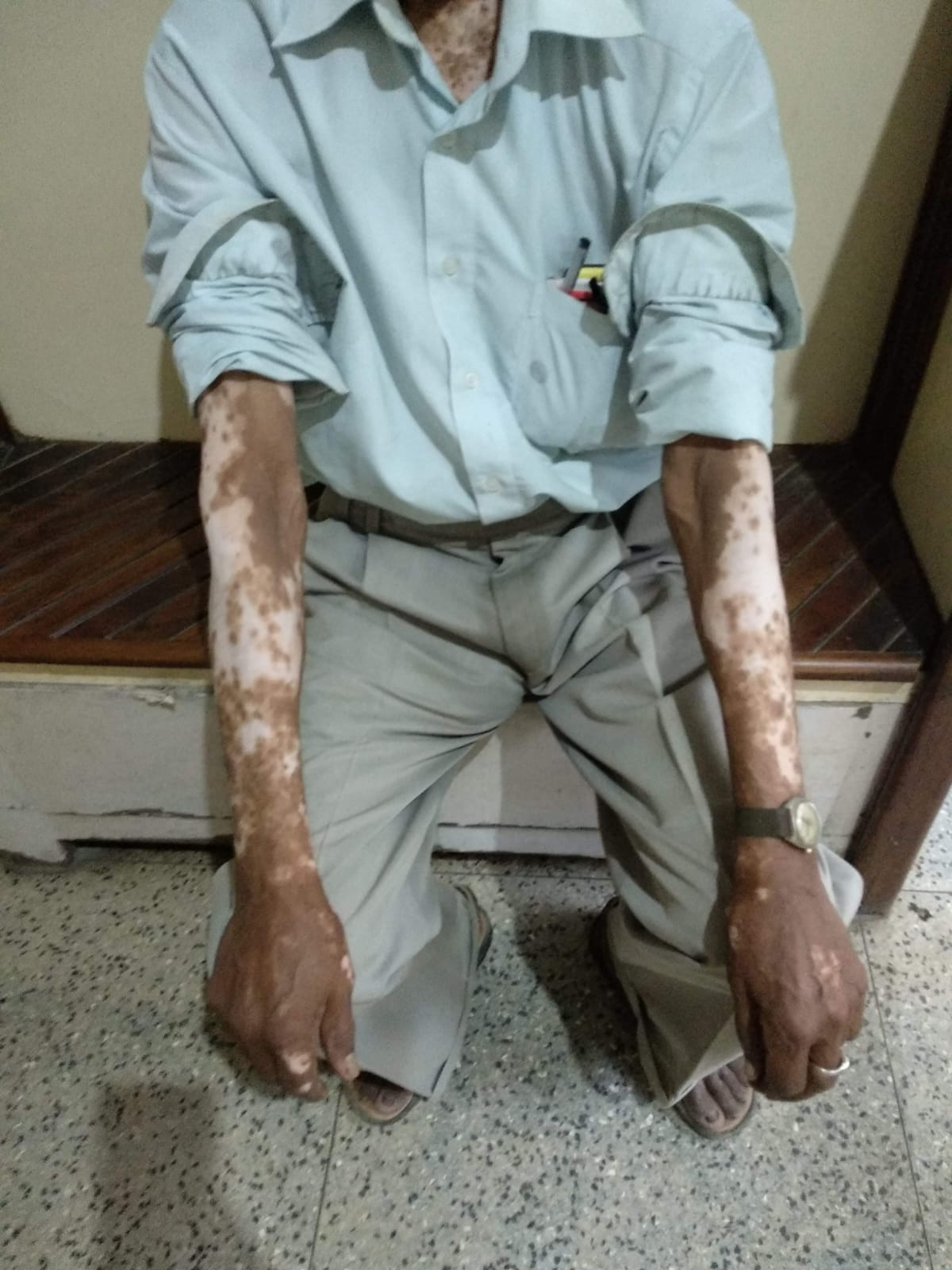



VITILIGO
INTRODUCTION
• Occurs due to selective destruction of the skin melanocytes that results in development of unsightly depigmented patches.
• Onset before the age of 18 years in more than 50% cases.
• Vitiligo can be separated into segmental and non-segmental (vitiligo vulgaris). Segmental vitiligo has important differences in etiology, prevalence of associated illnesses and therapy compared to other forms of vitiligo.
CAUSES
• Non-segmental vitiligo is most commonly described as having an autoimmune etiology. Both bumoral and T cell mechanisms are possibly involved in pathogenesis.
• Segmental vitiligo is possibly due to some chemical mediators released from peripheral nerve endings that cause decreased production of melanin (neural theory).
CLINICAL FEATURES
• Presents as small, depigmented lesions which may enlarge and coalesce into larger patches.
• Vitiligo is most striking around the body orifices: eyes, nostrils, mouth, nipples, umbilicus and genitalia.
• Vitiligo can affect melanocytes in the hair roots resulting in patches of white hair. Depigmentation can affect mucosa! areas such as in the mouth or genitalia.
• In non-segmental vitiligo, lesions are usually symmetrical and new patches may appear throughout the patient's life. It may be either generalised or localised. The overlying hair may remain pigmented or turn white. This type of vitiligo is often associated with a number of immune system aberrations. Childhood, non-segmental vitiligo is frequently associated with autoimmune thyroiditis. To the contrary, vitiligo in adults is quite strongly associated with a number of autoimmune disorders, including alopecia areata, diabetes mellitus, pernicious anaemia, Addison's disease and Hashimoto's thyroiditis.
• Segmental vitiligo usually has unilateral involvement and a dermatomal distribution. Without treatment, lesions are typically persistent throughout developing within 2 years of onset. It is typically associated with leukotrichia (white hair). It has no association with autoimmune thyroiditis and is in fact rarely associated with any autoimmune disease.
• Koebner phenomenon: Non-segmental vitiligo can spread by Koebner phenomenon. Other skin conditions that can also spread by Koebner phenomenon include psoriasis and lichen planus. The Koebner phenomenon is the initiation of new lesions that occur as a result of trauma, particularly mechanical trauma such as scratching.
• Use of a Woods light with UV light in the range of 320-400 run can greatly assist in locating areas of pigment disruption. A complete examination should include inspection of the genitalia and areas of skin folds as these areas can be easily overlooked.
TREATMENT AT DR. SOHAN LAL CLINIC
The integrated POLYCLINIC facility offers patients to select their treatment either from the Department of Homeopathy or from the Department of Medicine.
We provide scientific, research-based, and professional services to people across the world, aiming to achieve the highest success rate.
